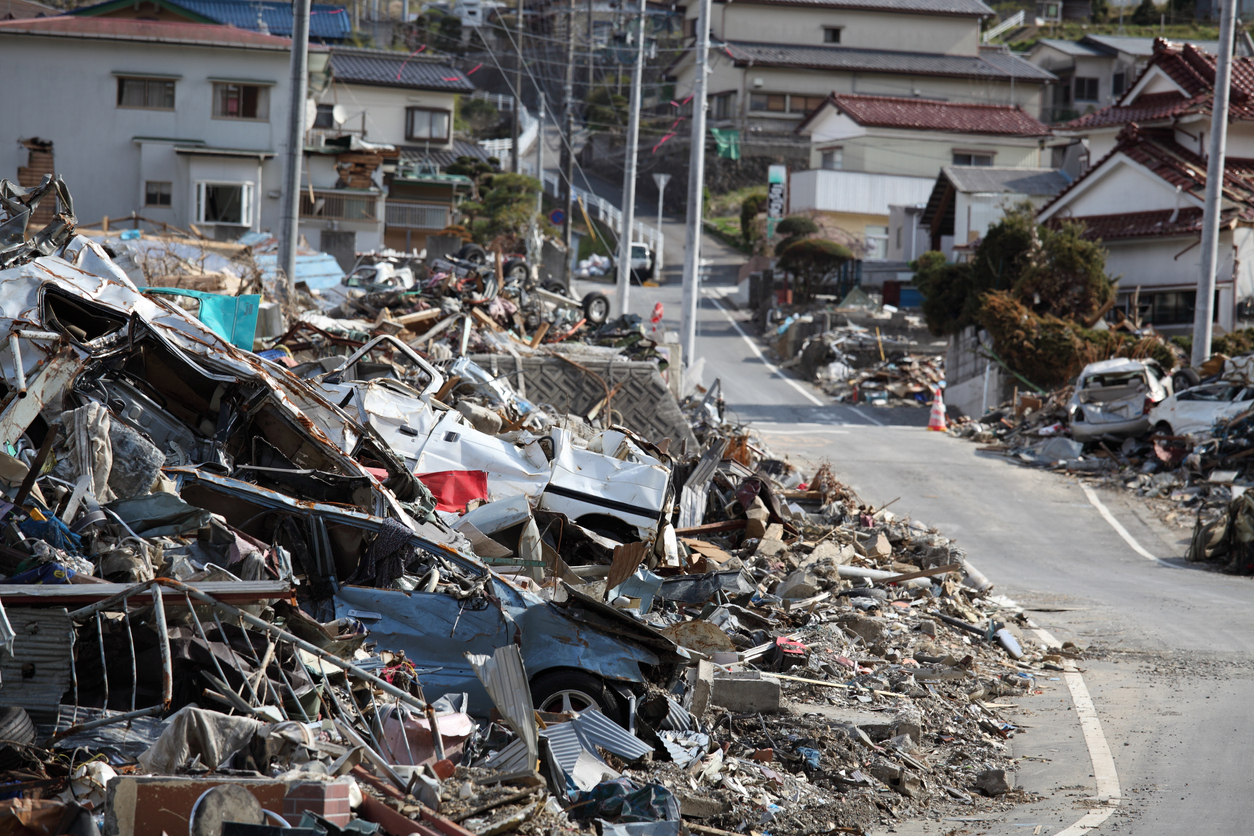2022/06/07
11 Years Since the Great East Japan Earthquake, Japan is Now Responsible to the Whole World for Restoring the Society by Inheriting the Memories and Experiences of Disaster

(The original article in Japanese was posted on March 11, 2022)
On March 8, Committee on New Direction of Economic and Industrial Policies, the Industrial Structure Council, the Ministry of Economy, Trade and Industry (METI), proposed a new industrial policy, “New Direction for Realizing a Disaster-Resilient Society.”
Specifically, the proposal stated, “Total economic losses from climate-related disasters between 2010 and 2019 are estimated at $1.6 trillion, and the potential of the market in developing countries are estimated to be $280 to $500 billion per year as of 2050 (according to the United Nations Environment Programme). Therefore, considering those facts, measures against disaster should be viewed not as a cost but as an opportunity for global business creation, and a shift from investment by the public sector to marketization of disaster prevention and mitigation, and an investment by the private sector should be considered as a form of industrial policy.”
In the council, featured were cases of major companies and startups making global contributions in fields such as weather observation, disaster prevention information systems, water purification, and soil remediation. In fact, the level of technology backed by the knowledge unique to Japan, where natural disasters occur constantly, is high, and the potential of Japanese companies in the global market is great.
The number of adoptions of the scheme of the Social Impact Bonds (SIBs) that aim to solve social issues through the use of private funding was 200 cases all over the world as of 2021, totaling $431 million in value. Although this is still not enough, the number of business opportunities using private funding is gradually increasing. The trend toward an increase in SDGs and ESG investment also serves as a tailwind. I look forward to seeing the contribution of Japanese companies in these fields.
Tomorrow is March 11, 11 years since the Great East Japan Earthquake. Tangible reconstructions such as the construction of seawalls and the restoration of transportation infrastructure are almost complete, with the exception of the reconstruction of nuclear power plants. Meanwhile, there are still more than 38,000 evacuees. Harmful rumors also linger. There is also serious discord between people who received sufficient compensation and who did not. Disaster-related deaths continue to occur. Local communities have not been fully rebuilt. Mental health care of victims is also an issue that needs to be solved. In short, enormous challenges still remain on the intangible side. However, at the same time, the processes and results of addressing these issues can become new knowledge. Carefully documenting the challenges faced by the affected areas and people, discussing solutions, and sharing them with the rest of the world will be the greatest contribution to resilience, or the restoration and recovery of the world.
The government-sponsored annual memorial ceremony ended last year, the “10th year” since the earthquake. The “memories” shared by society as a whole will be inevitably fading. It goes without saying, however, that the greatest measure to prevent disasters is to pass on the shared memories.
There are 1,299 “Natural Disaster Monuments” across Japan that tell of past natural disaster damage. The Geospatial Information Authority of Japan shows the locations of these monuments of 382 municipalities on its website. I urge you to take a look because you will realize that risk of disaster exists everywhere, and it can happen at any time. It is the responsibility of our generation living in the era of “3.11” to continue to think of disaster as our own thing, and to pass these memories on to the future.
This Week’s Focus, March 11
Takashi Mizukoshi, the President